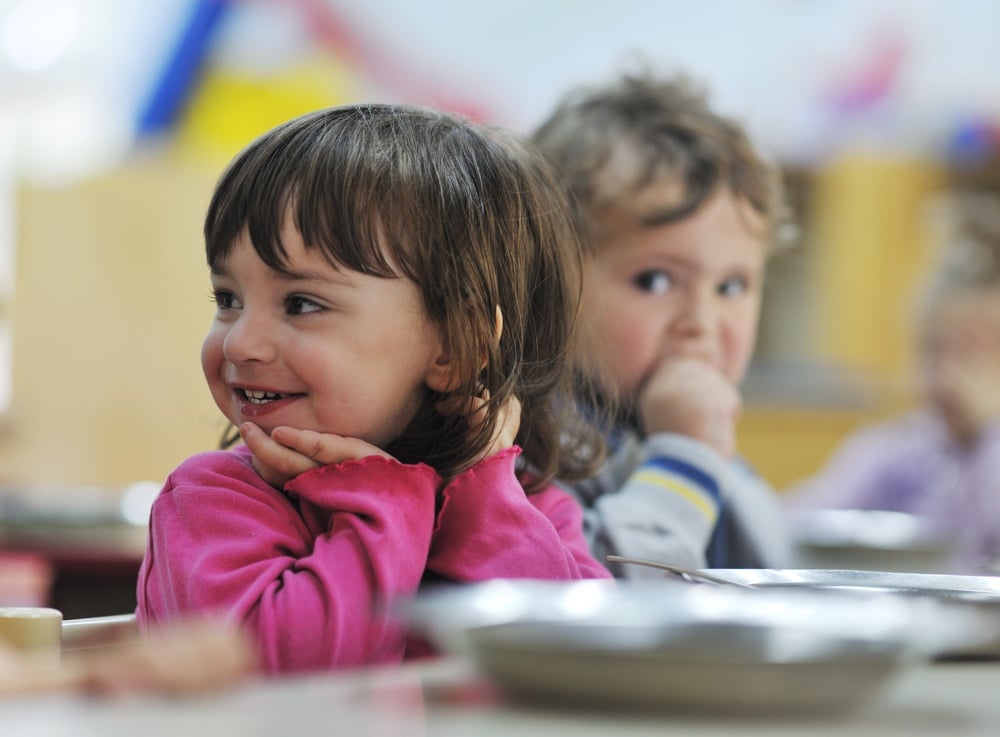Updated December 2025
What should early childhood educators (ECEs) know about ADHD in preschool-age children?
Let's start with the fundamentals. Attention-deficit/hyperactivity disorder (ADHD) is a neurological disorder that breaks down into three different categories:
1) Predominately inattentive (previously referred to as ADD)
2) Predominately hyperactive (very rare)
3) Combined (most prevalent)
According to the Centre for ADHD Awareness Canada, ADHD is the most prevalent childhood neurodevelopmental disorder. More than five per cent of all schoolchildren have ADHD.
ADHD typically becomes apparent between the ages of three and five—during the preschool years. Early childhood educators have a very special role to play in working with young children with ADHD.
ECEs can help with early diagnosis and provide the support needed to ensure kids affected by ADHD receive every opportunity to learn and grow with confidence.
Fast Facts About ADHD for Early Childhood Educators
Young children with ADHD are often wrongly labeled as "poorly behaved" or "lazy" because they have trouble concentrating, sitting still, and socializing with peers in the classroom. Lack of education and stigmatization has made ADHD one of the least understood childhood disorders—which leads to many missed opportunities for early diagnosis and treatment.
Here are a few important facts for ECEs to keep in mind as they graduate from college and move into professional roles at daycares and preschools:
- ADHD tends to run in families
- Children with ADHD do not have impaired intelligence; they simply have different learning needs
- Boys are three times more likely to have ADHD than girls
- About 50 per cent of all children diagnosed with ADHD also have another behavior disorder (such as an anxiety or a mood disorder)
- Researchers don't know exactly what causes ADHD (there is no direct link to parenting style or high exposure to television, for example)
- ADHD doesn't just make it hard for kids to pay attention; over-focusing can also be a problem (trouble breaking away from one activity to begin something new)
- Children with untreated ADHD are at a greater risk for learning difficulties, dropping out of school, low self-esteem, substance abuse, accidents and injuries, conflicts with law enforcement, and early death
- ADHD is highly treatable
Common Signs of ADHD in PreSchool Children
It's crucial for educators to know which warning signs to watch for so they can intervene quickly with appropriate measures.
Once they have recognized symptoms of ADHD, the ECE can suggest the child be evaluated by a doctor to receive an official diagnosis. At the same time, the educator can begin adapting the learning environment to better suit the needs of the child—helping them grow, learn, and thrive along with their peers.
It can be really challenging to identify ADHD in preschoolers because at this age, it's normal for kids to be impulsive or have difficulty paying attention. However, there are some distinct signs ECEs might notice that will help distinguish kids with ADHD, such as:
- The child is always on the go and has difficulty stopping even for meals, naps, storytime, etc. (even very active children are usually able to settle down for brief periods of rest).
- The child consistently has trouble completing tasks and jumps quickly from one toy or activity to the next.
- The child is excessively impatient, prone to outbursts, has difficulty playing with others, interrupts often, and has trouble controlling emotions.
- The child demonstrates underdeveloped fine motor skills.
If these signs are present most or all of the time, it is reasonable to talk with the parents and suggest they might consult with the family doctor about next steps.
Adapting the Preschool Classroom for Kids with ADHD
Even if a child in your care hasn't yet received an official ADHD diagnosis, there are several ways you might adapt your preschool classroom to support kids with attention difficulties. These are some ideas and tips to consider:
- Don't scold or punish the student continuously and expect results. You'll need to use positive reinforcement, such as a points or reward system, to help the child learn to modify his/her behaviour.
- Decide on a silent code or signal you can use to remind the child to stay on task or stop disruptive behaviors, such as tapping them gently on the shoulder, raising two fingers, or holding up a particular object.
- Position the child away from potential distractions, like a window, and keep them close to you when you're explaining or supervising an activity.
- Use visuals as much as possible to explain procedures and tasks (with colour coding, images, and charts).
- Tackle the most challenging learning activities early in the day.
- Break up longer periods of focused activity: invite students to stretch, run in place, do jumping jacks, etc. for a moment before returning to the task.
- Use the student's name frequently while asking questions or explaining tasks to attract and hold their attention.
- Strive to create the most ordered, predictable classroom routine possible.
- Establish a positive relationship with the child's parents so you can learn about their behaviours and interests outside of school and work together on learning strategies.
Interested in learning more about ECE training?
Consider Herzing College's early childhood education training. It's delivered online and takes just 14 months to complete. Visit the program page to see a full list of courses and chat live with a friendly advisor. We're here to help!







